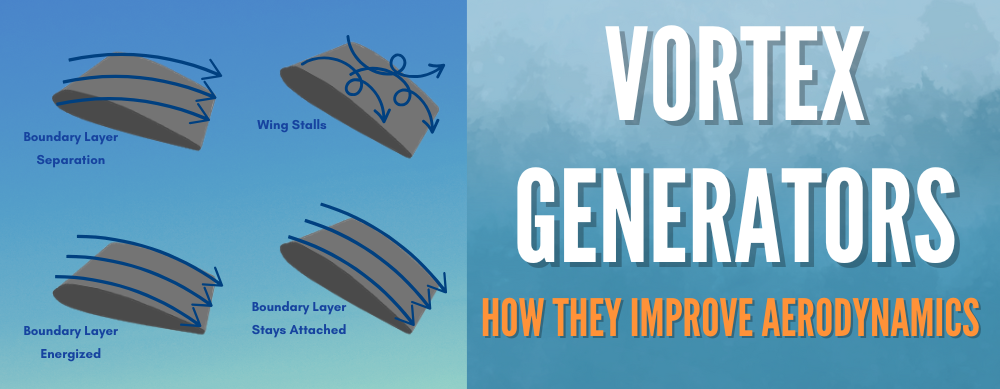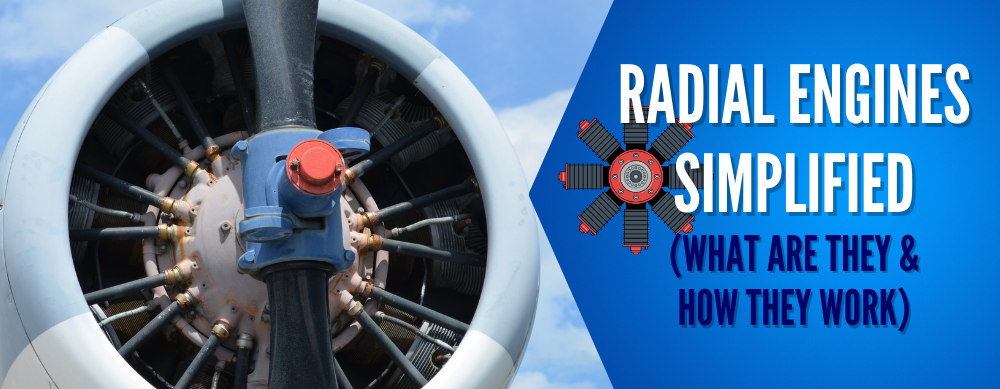Se você examinar as asas de quase qualquer aeronave, primeiro notará o formato aerodinâmico que ajuda todas as aeronaves a terem sustentação. Mas algo que você pode não notar tão facilmente é um recurso de design chamado “wash out”.
O propósito do wash out é ajudar a tornar a aeronave mais estável durante um stall. Mas como ele se parece e como exatamente ele funciona?
Responderemos a todas essas perguntas e muito mais neste artigo!
RESUMO
-
Washout é um recurso sutil de design de asa para estabilidade de voo e recuperação de estol.
-
Washout vê que a raiz da asa para antes das pontas.
-
Este projeto é comum na aviação geral, planadores e aeronaves comerciais.
-
O washout ajuda os pilotos a entender como as aeronaves são projetadas.

O que é Wing Washout?
Um washout é uma característica de design deliberada em que a ponta da asa tem um ângulo de incidência menor que a raiz da asa.
Para ajudar a explicar melhor, significa que, à medida que uma aeronave se aproxima de um estol, a raiz estola primeiro, enquanto as pontas continuam gerando sustentação. Isso ajuda a criar melhor controle e estabilidade para a aeronave.
Você pode tentar localizar "washout" em uma asa examinando as asas da frente da aeronave e observando a torção que se forma da raiz até a ponta. A raiz terá um ângulo de incidência maior do que em comparação com a ponta da asa.
Como a lavagem da asa afeta a distribuição de sustentação
-
A diferença no ângulo de incidência ao longo da envergadura causa um padrão de estol progressivo.
-
O washout garante que as pontas das asas permaneçam voando enquanto a raiz estola. Os pilotos acabam mantendo o controle de rolagem através dos ailerons.
-
Os washouts ajudam a criar um comportamento de estol controlado que reduz o risco de giros não intencionais e pode ajudar na recuperação do estol.

O propósito da lavagem no projeto de aeronaves
Asas de aeronaves são projetadas com washout para resolver problemas de estol. Ao examinar a borda dianteira da asa, você notará a raiz, que é o ponto onde a asa se conecta ao corpo da aeronave.
A torção na ponta da asa faz com que a raiz, que tem um ângulo de ataque maior, atinja seu ângulo de ataque crítico antes da ponta, levando a um estol na raiz primeiro.
Isso evita que a asa inteira estole e é frequentemente chamado de "lavagem estrutural", em vez de lavagem aerodinâmica.
Desgaste estrutural vs. aerodinâmico
Conforme mencionado no final da seção anterior, existem dois tipos de erosão: erosão estrutural e erosão aerodinâmica.
Mas ainda assim, qual é a diferença entre os dois? Vamos explorá-los.
Lavagem estrutural
-
Uma lavagem estrutural é obtida por meio da torção física da asa para que a ponta tenha um ângulo de incidência menor que a raiz.
-
Esse tipo de erosão é mais comum em aeronaves de asa fixa, como o Cessna 172, que tem cerca de 3° de erosão.
Desgaste aerodinâmico
-
É realizado usando diferentes formatos de aerofólio, geradores de vórtice, faixas de estol ou manguitos de asa.
-
Você verá isso em aeronaves como o Cirrus SR-22. Ele usa seções de asas com manguito para ajudar a manter o controle em ângulos de ataque altos.

Como funciona o Washout?
Quando uma aeronave aumenta seu ângulo de ataque, a raiz atinge o ângulo crítico de estol primeiro devido à sua maior incidência. Isso permite que as pontas continuem gerando sustentação, evitando roll-offs repentinos que podem levar a um giro.
Cenários de Lavagem em Parada
-
Voo reto e nivelado → Tanto a raiz quanto a ponta geram sustentação normalmente.
-
Aproximando-se da parada → A raiz sofre a separação primeiro, enquanto a ponta ainda fornece sustentação.
-
Parada total → A raiz fica completamente parada, mas as pontas mantêm o fluxo de ar para recuperação.

Washout e diferentes tipos de aeronaves
Aeronaves de Aviação Geral
-
A maioria das aeronaves pequenas, como os Cessna 172, usam washout para ajudar a fornecer estabilidade em caso de estol.
-
Evita momentos bruscos de rolamento durante uma parada.
Planadores e Asa Delta
-
A lavagem reduz a guinada adversa e melhora a estabilidade em voos lentos.
-
É usado para minimizar o arrasto e otimizar o desempenho do deslizamento.
Aeronaves militares e de alto desempenho
-
Alguns caças usam washout reverso (wash-in) para melhorar a manobrabilidade em alta velocidade.
-
A falha é menos comum em aviões acrobáticos porque eles exigem características de voo simétricas.

O que procurar:
Quer saber como identificar o washout? Veja como:
-
Frequentemente, em aeronaves, a borda de fuga perto da ponta da asa é ligeiramente inclinada para baixo em comparação à raiz. Isso ocorre porque há uma diminuição no ângulo de incidência da raiz à ponta.
-
Você pode ver pela forma como os ailerons e flaps estão alinhados que eles são feitos de uma forma em que a linha de corda da ponta da asa fica em um ângulo menor em relação à raiz.
-
Se a asa da aeronave tiver winglets, o winglet estará localizado na ponta da asa e será orientado para reduzir o arrasto. Ele é frequentemente pareado com washout para ajudar a aeronave a manter sua eficácia de controle em condições de estol.

Washout vs. Wing Twist: Qual é a diferença?
Há uma diferença entre ter uma torção em uma asa ou especificamente uma falha.
Principais diferenças
|
Recurso |
Desgaste |
Torção de asa |
|---|---|---|
|
Definição |
Ângulo de incidência decrescente da raiz à ponta |
Uma torção geral ao longo da envergadura da asa |
|
Propósito |
Ajuda a melhorar as características e o estol das asas, a estabilidade e o controle |
Pode ser para integridade estrutural ou eficiência aerodinâmica |
|
Exemplo |
Cessna 172 (3° de lavagem) |
Alguns caças com lavagem intencional para sua manobrabilidade |

Perguntas frequentes
-
Qual é o principal motivo para usar washout em asas?
O washout garante que a raiz da asa pare antes da ponta. Ele serve para manter o controle e evitar tendências perigosas de rolagem.
-
Todas as aeronaves têm washout?
A maioria das aeronaves projetadas para estabilidade e segurança apresentam algum grau de desgaste, mas aviões acrobáticos e de caça podem apresentar pouco ou nenhum.
-
A lavagem pode ser ajustada após a construção da aeronave?
Sim, pequenas alterações de washout podem ser feitas usando aparelhamento de aileron, tiras de estol ou modificações na borda de ataque.
-
Qual é o nível de washout típico em aeronaves pequenas?
Aeronaves leves como o Cessna 172 normalmente têm cerca de 3° de washout, enquanto outros projetos podem variar com base em suas necessidades aerodinâmicas.
Remover
Agora você sabe que um washout é um recurso de design incrível que ajuda a melhorar a estabilidade de uma aeronave, o comportamento de estol e dá mais controle ao piloto.
Lembre-se apenas de que a raiz da asa estola antes das pontas, o washout mantém a eficácia do aileron e previne roll-offs repentinos e reduz o risco de giros. É um bocado para dizer, mas é importante lembrar.
É bem comum na aviação geral, aeronaves comerciais e também em planadores. Algumas aeronaves de alto desempenho e acrobáticas podem não usar washout, mas isso é porque elas precisam de manobrabilidade.
Não tenha medo de aprender mais sobre engenharia e aerodinâmica. O voo e como ele funciona é algo incrível e uma das maiores realizações da humanidade.
Interessado em aerodinâmica?
Nossos guias foram projetados para ajudar!
-
Estol do Tailplane: A aerodinâmica e como você pode se recuperar
-
Cambagem do aerofólio: seu efeito na aerodinâmica Como gera sustentação
Você achou este artigo útil?
Você acha que esquecemos de uma pergunta importante da entrevista? Deixe-nos saber nos comentários abaixo!







